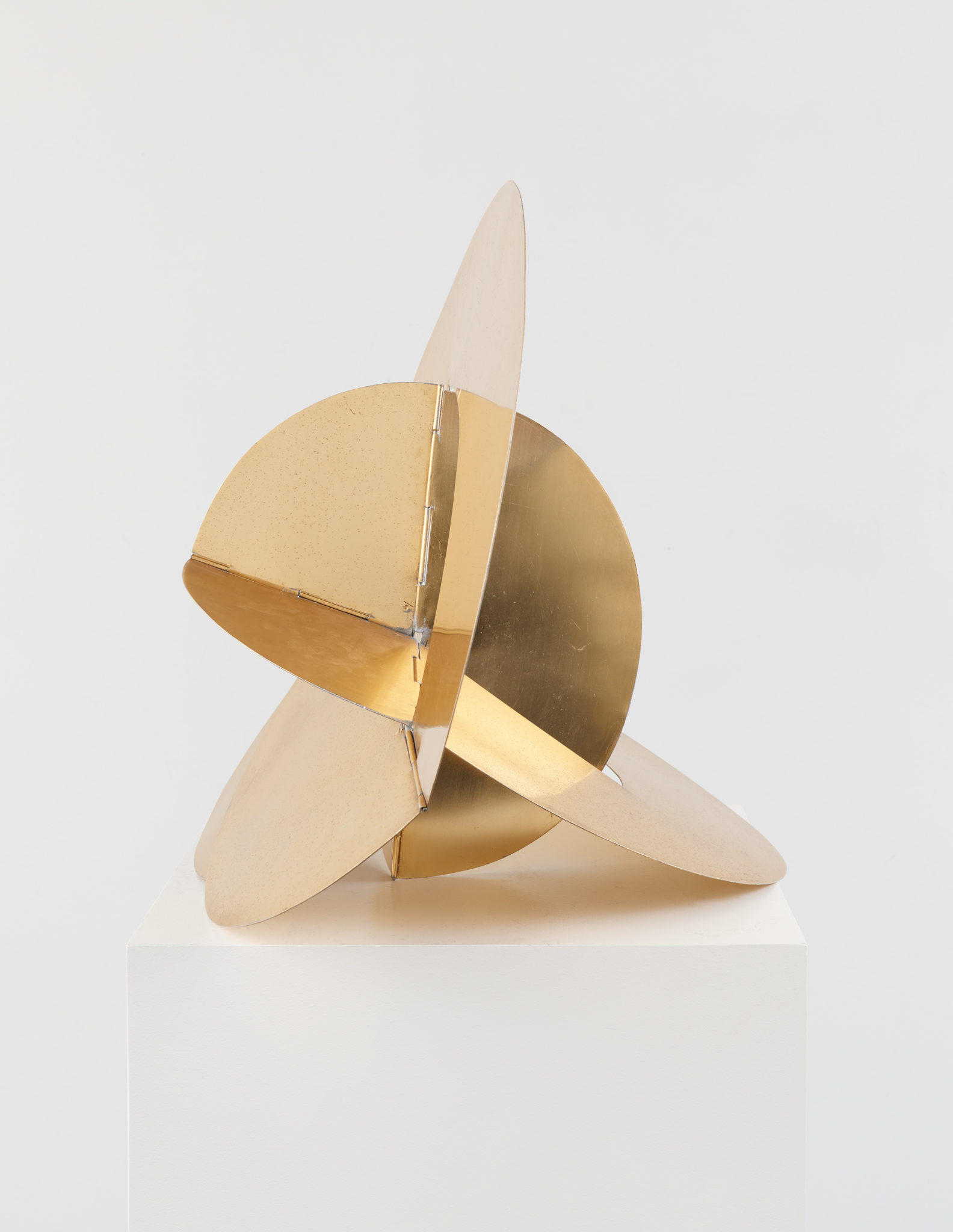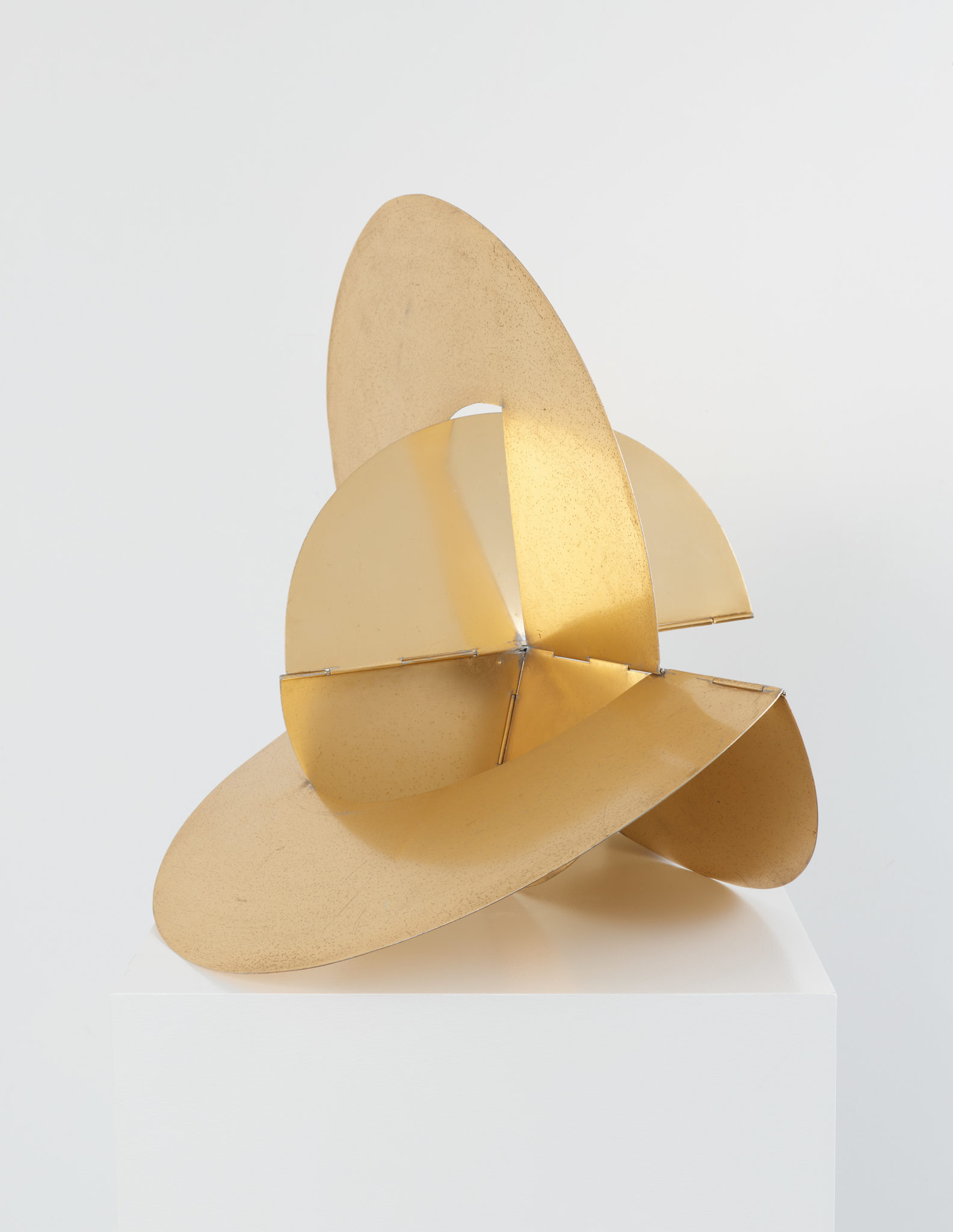Lygia Clark
Bicho Parafuso sem fim (Md), 1962
Gold anodized aluminium
10 5⁄8 x 23 5⁄8 x 17 3⁄4 inches (27 x 60 x 45 cm) (dimensions variable)
© Lygia Clark
Photo Elisabeth Bernstein
I gave the name Bichos to my works of this period, because their characteristics are fundamentally organic. Furthermore, the hinge between the planes reminds me of a backbone.
The arrangement of metal plates determines the positions of the Bicho, which at first glance seems unlimited. When asked how many moves a Bicho can make, I reply, “I don’t know, you don’t know, but it knows.”
The Bichos don’t have a back.
Each Bicho is an organic entity that fully reveals itself within its inner time of expression.
It has an affinity with the shell and shellfish.
It is a living organism, a work essentially active. A full integration, existential, is established between it and us.
— Lygia Clark, Quoted in Cornelia H. Butler and Luis Pérez-Oramas, Lygia Clark: The Abandonment of Art, 1948–1988 (New York: The Museum of Modern Art, 2014), 160.
Lygia Clark’s Bichos take their name from the Portuguese word for “beast” or “critter.” Created with the help of fabricators in a variety of metals, including stainless steel and patinated aluminum, about 70 were made between 1960 and 1966. Each consists of geometric planes connected by hinges that allow them to be arranged in multiple configurations. The Bichos thus have no given form; rather, their form emerges through a series of folding and unfolding gestures that are uniquely performed by each viewer who encounters them. In Clark’s understanding, this encounter consisted of two parts: the first was an external action, initiated by the spectator, while the second was a movement internal to the Bicho, “produced by the dynamics of its own expressiveness,” in her words. “The conjunction of your gestures with the immediate response of the Bicho creates a new relationship, and this is only possible because of the movements the Bicho knows how to perform by itself: it is the Bicho’s own life,” she explained.
While not explicitly figurative, each Bicho was, for Clark, an organic entity: “a living organism, a work essentially active,” in her words. Consisting, like an organism, of interconnected parts, its hinges recall backbones or vertebrae, while its overall appearance recalls that of a crustacean, mollusk, or shell. The present work, Bicho Parafuso sem fim Md, consists of a series of nested curves which reflect Clark’s fascination with the Möbius strip. As a surface without start or finish, the Möbius strip instantiated her idea of the “organic line,” which she first articulated in a 1954 lecture. Other to line’s traditional status as a limiting bound, the organic line was an incision, interruption, or gap that opened painting’s compositional plane onto its spatial surrounds. It thus expressed Clark’s lifelong search for a balance between polarities such as plane/space, inside/outside, full/empty, life/death, and self/other: concepts which fueled both her work and her approach to life. As a form that neither separates nor bounds, the Möbius “makes us live the experience of a time without limit and a continuous space,” Clark explained. This concept is captured in the present work’s title: “sem fim” means “without end,” while “Parafuso” means “screw,” an object whose helical grooves echo the Möbius’s endless spiral.



